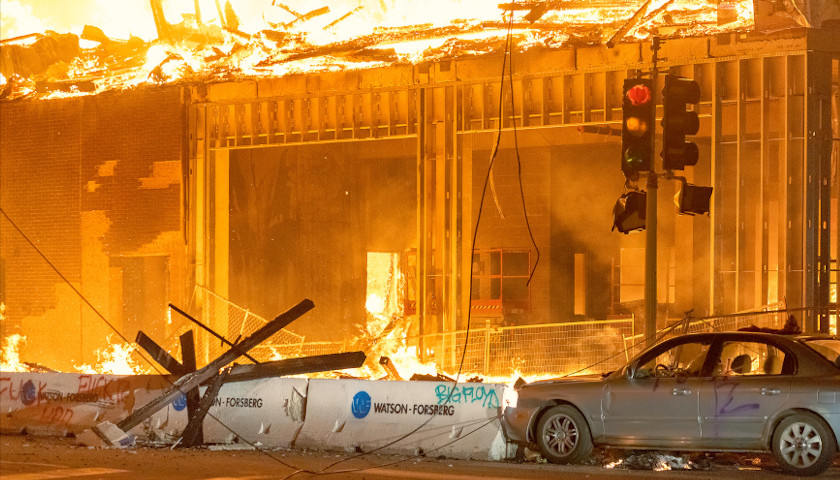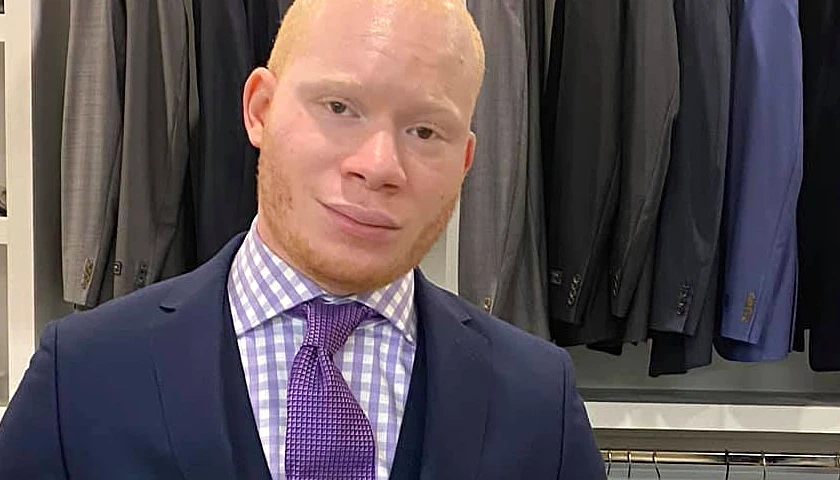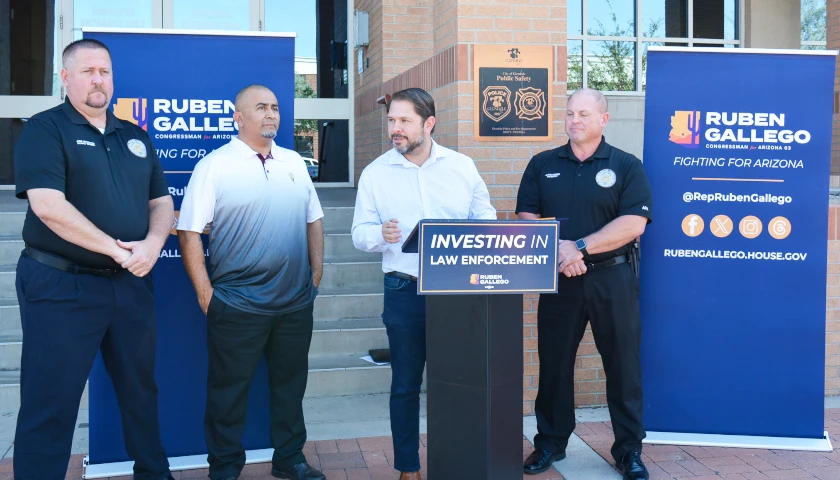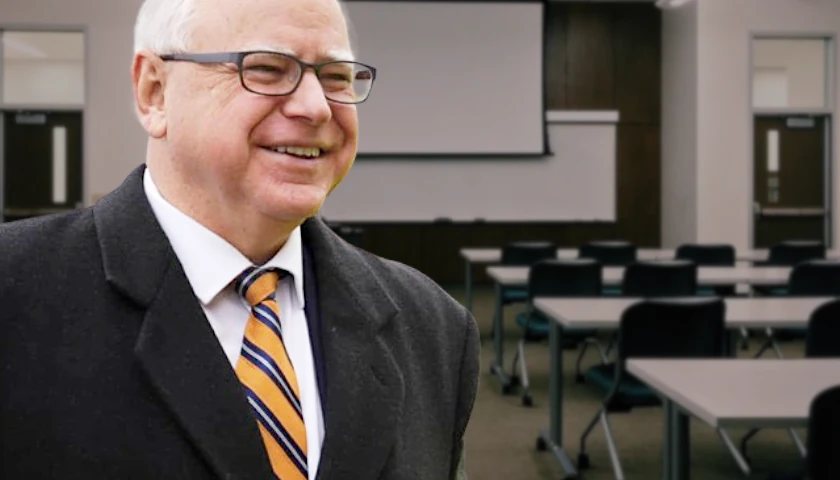by William B. Allen
Morally speaking, we live today as a people peering into a mirror without reflecting glass. As a culture, we hardly know who we are.
This has become most clear to me as a consequence of the experiment I have conducted in recent days. I requested people of disparate backgrounds, dispositions, understandings, and political inclinations to respond to a video that has circulated around the web. The video engages the drumbeat narrative of racial differences and their consequences, and I sought to discover whether anyone at all could peer beyond the now orthodox content to identify the Mengele-like substance.
The answer was that no one, from any perspective and no matter how genuinely earnest to be humane, could discern the gruesomely dehumanizing content of the video—a thing that might have been manifest except that it has attracted not the least concern from the tech watchmen who sit in judgment on every expression.
To make clear the foundations of the foregoing judgment, I direct attention once more to the video. Please take four minutes to watch.
The most frequent response to this video takes notice of the many ways in which factors other than race account for the differences among the subjects of this social experiment or, on the other hand, to embrace a fund of responsibility to be sensitive to the disadvantages under which some labor into and through life.
In case you have skipped viewing the video, I will summarize it. A rather taut, hyperactive social engineer has lined up 30 or so youths (a summer camp atmosphere) and invited them to a foot race for a $100 prize. Before giving the “go,” however, the instructor called out a series of social distinctions—how many had intact families; how many had food security; how many had tutors when younger; how many went to private school; etc.—and at each turn calling on those who responded in the affirmative to take two steps forward. At the end of this exercise, he had a staggered starting line for his foot race, with most of the white participants far out in front, and a backline, mostly people of color, with their heads hung down and some even tearing up.
In that posture—not from a fair starting point—he raced the participants in order to make the dubious claim that the outcomes were pre-determined by the cultural and social advantages that the winner(s) started with. And that, he said, is life in the United States.
It is of course inane to describe a handicapped race as life when full opportunity to stage an equal race clearly existed and surely would have produced a different outcome. Thus, the claim about the lesson of life was actually a slur upon American life. But even this too-familiar slur was not the evil of the exercise.
I do not casually apply the word evil, for this was an act of violence no less outrageous than what happened to George Floyd. Yes, Floyd had his breath and therefore his life snuffed out. But the youngsters in this pseudo-scientific experiment had their hopes, dreams, and ambitions snuffed out. Those hung heads and moistened eyes describe so much emotional and psychological damage that it must be recognized as an act of violence. People were reduced to the sensibility of themselves as defined victims in a case in which they had every opportunity, if treated fairly, to see themselves as competitive if not even victors. To drill into their minds the sense of victimhood was the reciprocal required to deprive them of a sense of agency.
It is outrageous that this social science experiment was practiced, upon human subjects, without the least regard for or attention to the ethical limits upon conducting such research. We must consider that the inconsiderate sermon that was delivered could have been delivered no less effectively had the experiment been run in reverse, and the distinguishing of relative advantages had occurred only after the race had been run. In that case, the false argument would have been manifest, since the outcome of the fair race would not have produced the supposed mirror caused by the advantages and disadvantages of life. The possessor of the greatest social advantages would not have surpassed the natural advantages of a Michael Jordan unless he or she were in fact a Michael Jordan. Instead, the observer would have noted people rising above the supposed limits of their conditions, providing a truer picture of “real life.”
What Happened to Humans Beholding Humans?
Now, why is it that almost no one could comprehend intuitively this clearest view of the video? The answer is simple: virtually all have been trained, like circus animals, to respond to prompts of racial differentiation as determining and therefore inviting only extenuation or compensation.
We no longer see one another with the eye of human beholding human and thus keen to the moral abuses to which one might be subject. Our stylized view of morality—equity and fairness—in fact consists of a blindfold barring the view of moral reality. As a culture, we have finally reached the equivalent of zero on the scale of moral quotient that would correspond with the putative intelligence quotient.
A contrasting experience from my own life will highlight the distinction I now make. As I left my home to attend college, I paid a goodbye visit to my high school English teacher. We enjoyed a pleasant season of reminiscence, but just before parting she delivered her final admonition to me. I must remember, she said, that as I would be attending a mostly white college (coming, as I did, from a segregated school in the South) I would discover that I would study among people better prepared than I for the experience of college. They will, she noted, have had better educations and be brighter than I, and I should not expect to excel comparatively as I was accustomed to doing.
She was wrong about that, in fact, but the lesson she imparted was not an act of violence. She acted in my interest on her own limited appreciation of the circumstances, seeking to prepare me to avoid discouragement.
The video experiment offered no such consolation or encouragement. It acted far more as a putative sociology, as if designed to reinforce the false sociology of Justice Henry Brown in the 1896 Plessy decision that legitimized Jim Crow: any inferences from the separation of the races that “the colored people” might draw from the separation of the races derives from their own subjective experience of the reality. This false premise served to justify what in fact was an enforced sense of inferiority. And the video accomplishes the same result. That is why the race could not be fairly run.
The Cultural and Moral Stakes
What distinguishes this abstract and conceptual ethic of separation, however, is not the literal separation of the races as a social good, but the emphatic psychological separation of the races under the illusion of advocating justice. In that sense it is the offspring of the diversity affirmative action that similarly—if not so immediately violently—inflicts the same damage.
One may observe this damage in the very recent squeal of a University of Michigan Law School student who discovered the reality of the empty promises of the decision in Grutter v. Bollinger from 2003. The student complains of the well-foreseen poisonous consequences of those practices, but instead of recognizing the necessity to abandon the Egypt of enslavement that they represent, and subject still to hoping without hope, she redoubles the demand for more sacrifices to Moloch.
Yet, keeping our focus on the video with which we opened, it is vital to indicate just what is at stake morally and culturally.
The fact that we are not capable of reacting with the same instinctive horror to the treatment of the youths in the video as we did to the dramatic murder of Floyd, provides evidence that our reaction to Floyd’s murder was not moral repulsion at all. It was rather an expression of the same acquired sensibility to the distinctions of race that we acquired at the hands of such treatment as we observe in the video.
The reality is that even those among us who are most repulsed about the false claims of the diversity managers have in fact been conquered by the sustained assault on our sensibilities. It is no accident that there is almost no one in any position of authority in our society—whether educational, corporate, military, religious, media, or political—who has not drunk the Kool-Aid. Abraham Lincoln identified a similar Kool-Aid in his day. In his day he described the effect as “blowing out the moral lights among us.” Today, the lights are extinguished. We have gone dark. We do not see the moral violence.
Still, I will sustain the call for an effort to recover, which begins with understanding how we came to be in such a state. For, although we have closed our eyes to moral imperatives, we have not doffed our nature. Whatever is human in us may still be invoked in defense of our civic lives.
– – –
W. B. Allen is Emeritus Professor of Political Philosophy at Michigan State University and a pastor at First Baptist Church in Havre de Grace, Maryland.






“Peering into a looking glass with no reflection’ I agree.
John Bussey Assoc editor WSJ on Fox News is using that looking glass. He looks at Chicago, for the Obama / Biden years, the murder capital of the world. And proclaims Biden has a plan…send in the sociologists and psychologists. Obama’s hometown, the murder capital of the world and Obama/Biden handled that so wonderfully. Even the man on the street during that period was baffled and astounded at the “hands off” of Chicago. The erudite Obama/Biden team did NOTHING!